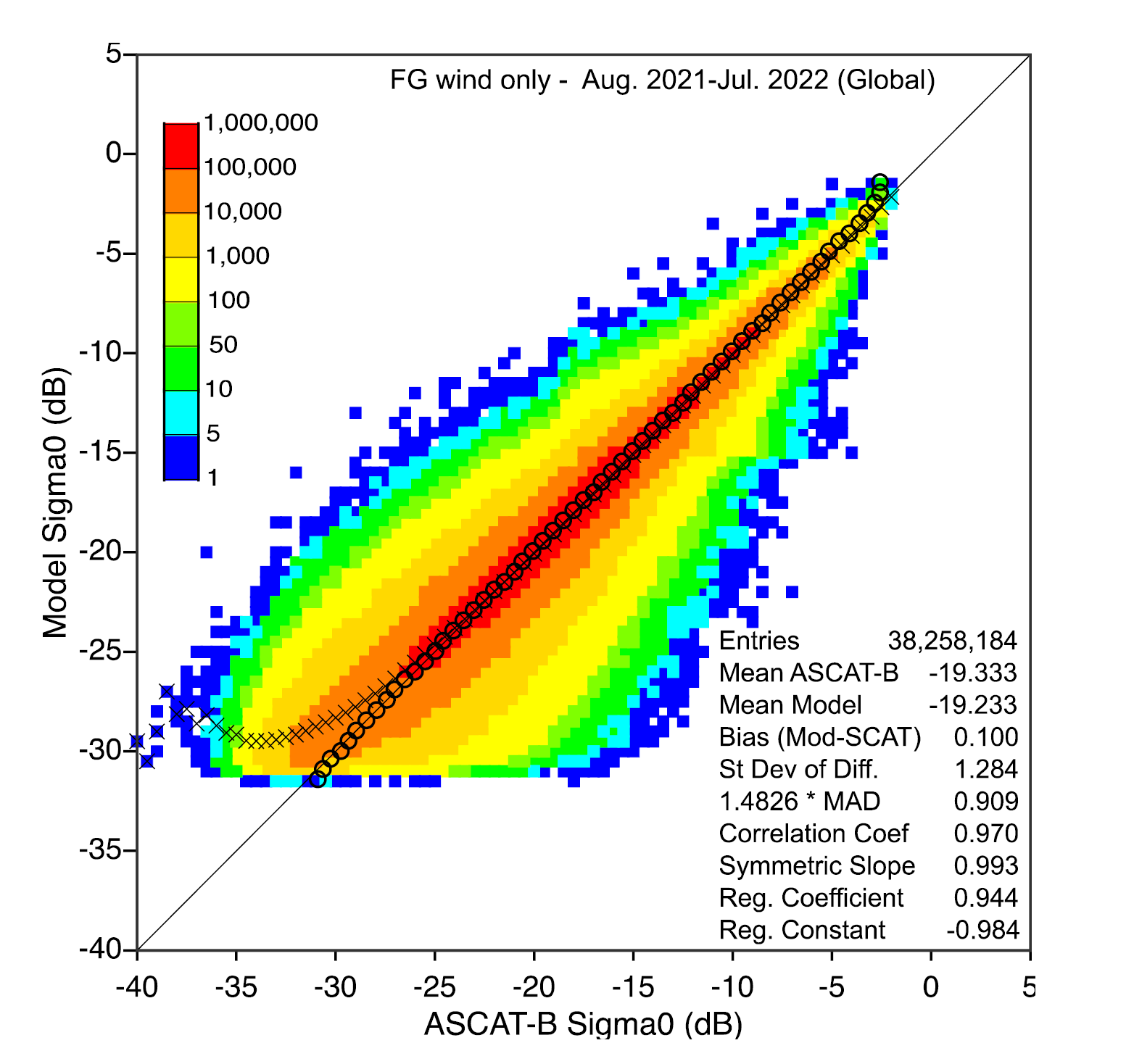10 October 2024
23 August 2024
About
The study examines scatterometer data assimilation in numerical weather prediction systems and proposes directly assimilating backscatter coefficients (sigma0) using an artificial neural network (ANN) forward operator. While conventional methods convert backscatter data to wind vectors using a Geophysical Model Function (GMF) and then assimilate the winds, this new approach bypasses that step, showing promising results in experiments. However, further optimization, such as refining error estimates and improving the ANN model, is needed. The study also explores ANN-based wind speed retrieval from altimeters, highlighting the importance of clean training data.
Objectives
This study aims to revisit the direct assimilation of scatterometer backscatter coefficient (sigma0) triplets over the ocean. The focus is on developing an observation operator (foreword model), along with its linear tangent and adjoint, using artificial neural networks (ANN). Another objective is to develop a method for retrieving wind speed from radar altimeter data.
Overview
Conventionally, scatterometer backscatter data are first converted to wind vectors, which are then assimilated into Numerical Weather Prediction Systems. This procedure has been used in the ECMWF Integrated Forecasting System (IFS) since mid-1990s. The positive impact of assimilating scatterometer-derived wind vectors on weather and ocean analyses and forecasts has long been recognized.
There have been attempts to improve the impact of scatterometer data by assimilating geophysical variables that are more directly related to what the scatterometer measures over the ocean. For example, surface stress and stress equivalent winds were tested. However, experiments using these variables did not show any clear improvement in the quality of the analysis and forecast. One possible explanation is that mapping the ambiguous wind vectors provided by the geophysical model function (GMF) to stress space is unlikely to change the actual information content of the observation. An alternative approach that warrants further investigation is the direct assimilation of backscatter coefficient ‘sigma0’ (also known as the normalized radar cross section, NRCS) triplets, thereby removing the GMF from the observation processing chain.
For the assimilation of backscatter in a 4D-Var system, a forward operator, along with its tangent linear and adjoint components is required. We developed a forward operator based on an artificial neural network (ANN). The nature of ANNs provide flexibility to include any combination of variables that contribute to the backscattering process. The basic combination, resembling the conventional GMF, includes 10-m neutral equivalent wind vectors (from the ECMWF IFS system) and measurement geometry parameters (referred to as ‘features’ in ANN terminology). The ANN model is trained to simulate operational ASCAT-B sigma0 triplet values (‘targets’) using ‘trusted’ measurements that have passed operational quality control and have been accepted for assimilation in 4D-Var (see Figure 1). This work was performed using the Keras/TensorFlow software packages in Python. Other combinations were also considered.
The development of the tangent linear and the adjoint of the ANN forward operator is straightforward due to the linear nature of ANN structure.

Several experiments were conducted to test the new approach. Two control experiments were run: one without scatterometer data and one with the conventional assimilation of scatterometer wind vectors. Additional experiments were conducted with the assimilation of backscatter data.
The results of these assimilation experiments clearly demonstrate that the direct assimilation of sigma0 is feasible and generally yields positive outcomes. An example of a reduction of significant wave height (SWH) error, as verified against altimeter data, is shown in Figure 2. However, there were also less successful cases. Therefore, further efforts are needed to optimise the assimilation process, such as specifying more accurate error estimates and improving the ANN forward operator.
The ANN-based retrieval of wind speed from altimeters was also studied, and several ANN models were developed for this purpose. The importance of clean training data was evident.


